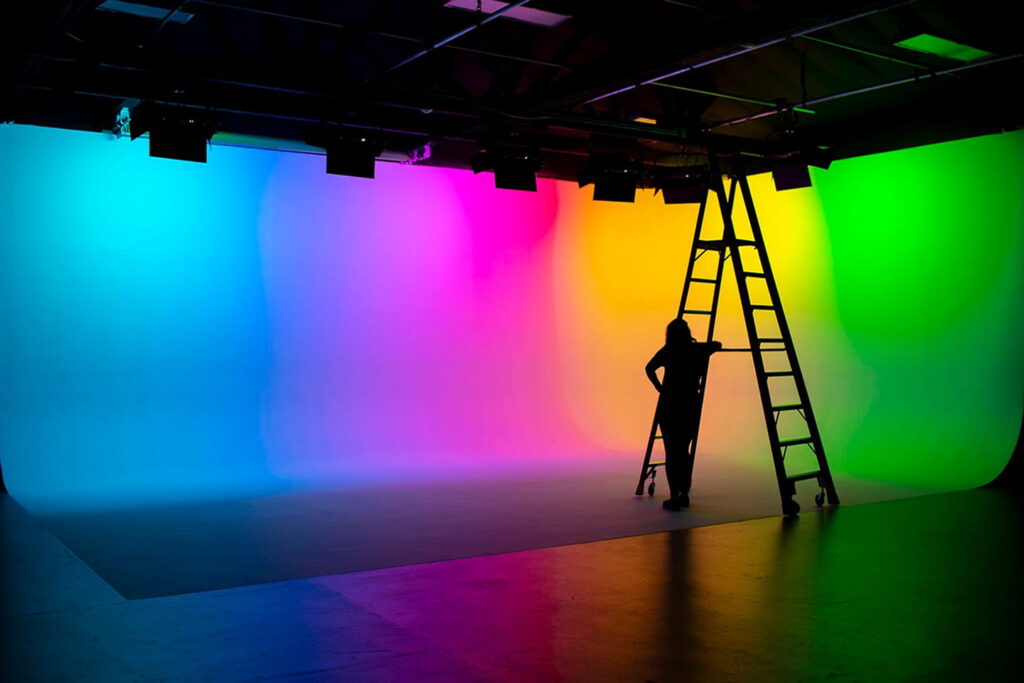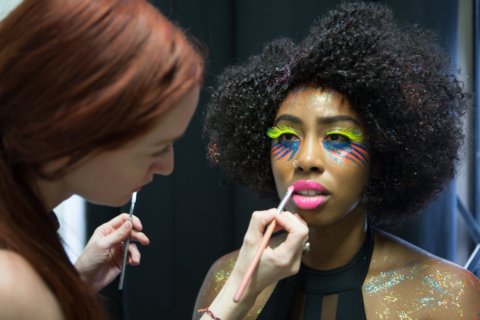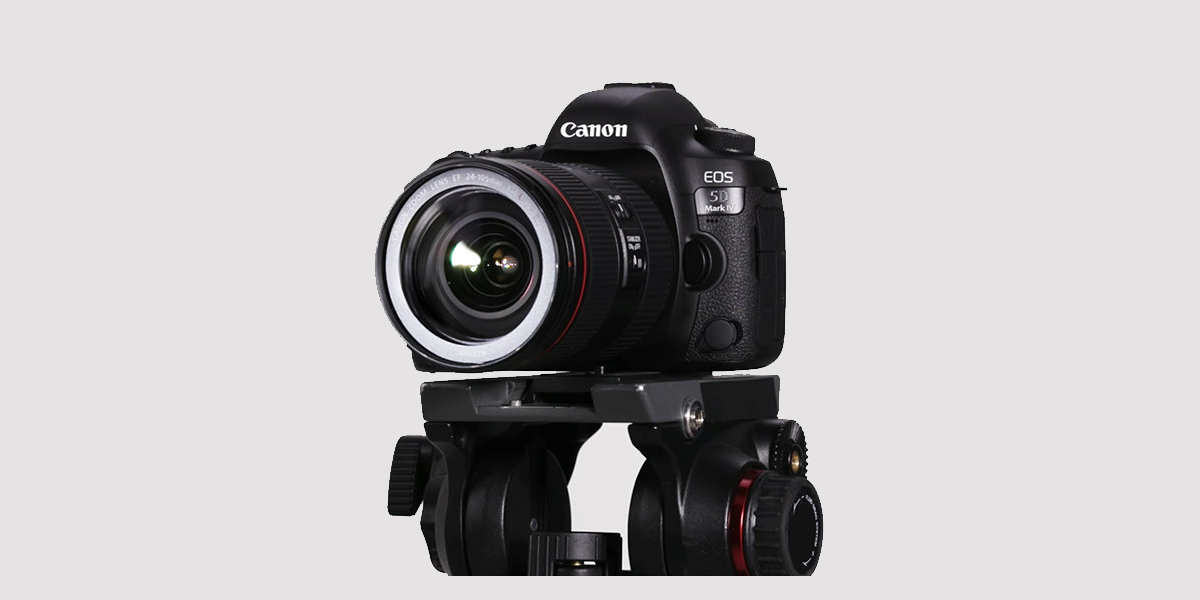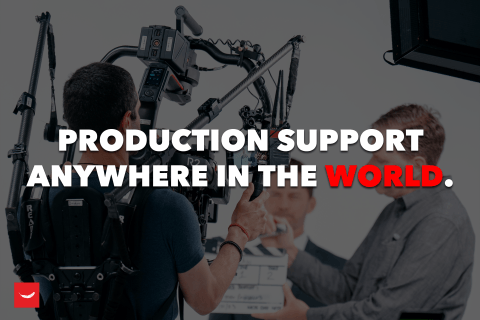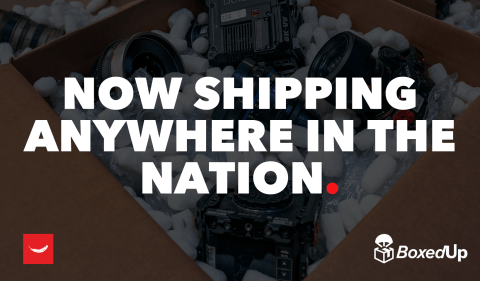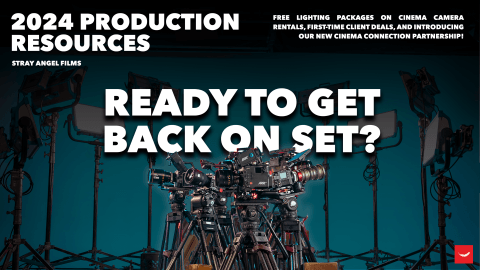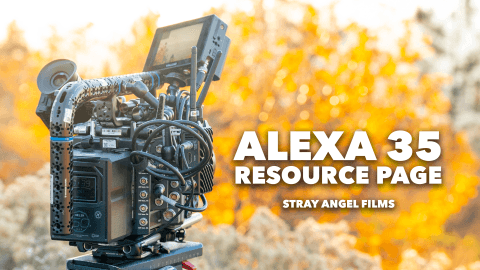While these cameras have some major advantages (small size, low price, low light sensitivity, etc), they weren’t designed to shoot video. Because of this, it is necessary to add a few accessories to turn these cameras into lean, mean, movie-shooting machines.
Fluid Head Tripod
The first thing you’ll want to add to your DSLR package is a fluid head tripod. Unlike still photo tripods, fluid head tripods are designed for video and give you the ability to smoothly pan and tilt.
If you’re looking for a low-budget fluid head tripod, the Sachtler Ace M might be the one for you. It can hold up to 9 lbs which means it is perfect for DSLR setups. Weighing less than 4 lbs itself, it is ideal for travel and flying.
Follow Focus
One of the first challenges that popped up for DSLR movie making was the ability to pull focus on the still lenses. You will need a follow focus in order to pull or change the focus. Several manufacturers have come out with follow focuses that you can use with your DSLR.
The Redrock Micro FollowFocus is a solid choice. It offers smooth, accurate focus and doesn’t slip or breathe like a lot of cheaper follow focus units.
If you need a solution that is a little more “budget” friendly, look into the ikan EV2 DSLR Follow Focus Kit.
Sound
While most DSLR’S do have a built-in microphone, it is generally low quality and can only be used for a scratch track. Because of this, you will likely either need to record via an addition onboard shotgun microphone or to an external recorder. There are a couple of DSLR sound options.
The first is a Rode VideoMic Pro Compact Shotgun Microphone, which is great for interviews, web videos, and documentaries when you can’t record externally. It just sits on top of the hot shoe mount and attached via the camera’s 1/8th inch mic input.
An even more, budget-friendly shotgun microphone is the Sennheiser MKE 400.
If you want to record internally to the camera using an XLR Microphone, you can use the Beachtek adapter. It attaches to the bottom of the DSLR and allows you to have two XLR inputs for your camera.
Another sound option is recording completely separately from the camera by using an external recorder such as a Zoom H6 or Zoom h4.
Bag or Case
Depending on what you’re shooting and if you’re traveling, you may want different bags or cases for your gear.
If you’re looking for a backpack, Canon Deluxe DSLR Backpack is a solid, economical choice. It’s extremely light and you can pack 1-2 DSLR’s, plus lenses, batteries, and cards.
If you need a tougher backpack, check out the Lowepro DryZone 200 Backpack. It has more storage space than the Canon backpack and it is totally waterproof. It’s also heavily padded so it can handle some rugged adventures.
When flying, your best option for a DSLR camera case is a Pelican Case. The Pelican 1510 is fantastic because it is small enough to go as carrying on luggage and even has wheels. If you don’t want to carry-on, it’s tough enough to be checked.
Handheld Rig
Since DSLRs were made for taking photos and not with video in mind, the ergonomics can be a little weird. If you find yourself not shooting on a tripod, you will probably want a handheld rig such as the Redrock Micro EyeSpy.
It’s probably the most commonly used handheld rigs for DSLR’s and it is easy to attach your camera and follow focus to.
Onboard Monitor or EVF
When shooting video, it is very important to be able to see every detail of the entire frame. DSLR screens are not large enough to be able to accurately see in focus. There are two ways to fix this problem:
1) Use an onboard monitor such as a Marshall 7″. These onboard monitors are great, especially if you have an AC as well as an operator.
2) You could also use an EVF. The most popular EVF’s are made by Zacuto, and we prefer the pro version. EVF’s are great when doing handheld work. If you also have an AC, you will probably want to use an onboard monitor in conjunction with it so he can see too.
While there is an almost infinite number of DSLR video accessories, we covered the essentials and hope this proved helpful!
